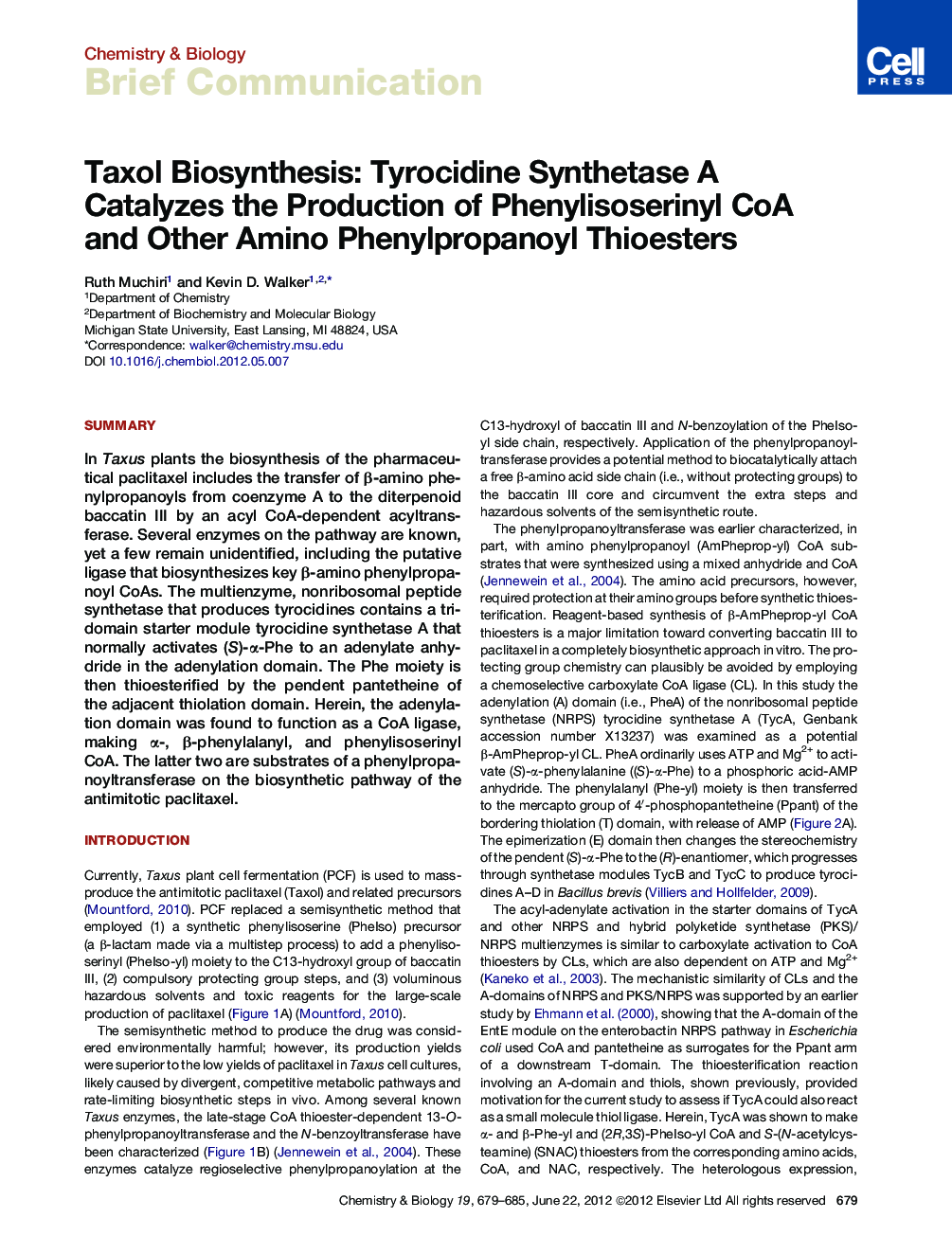| Article ID | Journal | Published Year | Pages | File Type |
|---|---|---|---|---|
| 1391287 | Chemistry & Biology | 2012 | 7 Pages |
SummaryIn Taxus plants the biosynthesis of the pharmaceutical paclitaxel includes the transfer of β-amino phenylpropanoyls from coenzyme A to the diterpenoid baccatin III by an acyl CoA-dependent acyltransferase. Several enzymes on the pathway are known, yet a few remain unidentified, including the putative ligase that biosynthesizes key β-amino phenylpropanoyl CoAs. The multienzyme, nonribosomal peptide synthetase that produces tyrocidines contains a tridomain starter module tyrocidine synthetase A that normally activates (S)-α-Phe to an adenylate anhydride in the adenylation domain. The Phe moiety is then thioesterified by the pendent pantetheine of the adjacent thiolation domain. Herein, the adenylation domain was found to function as a CoA ligase, making α-, β-phenylalanyl, and phenylisoserinyl CoA. The latter two are substrates of a phenylpropanoyltransferase on the biosynthetic pathway of the antimitotic paclitaxel.
Graphical AbstractFigure optionsDownload full-size imageDownload high-quality image (143 K)Download as PowerPoint slideHighlights► PheA (adenylation domain) of tyrocidine synthetase A is identified as a CoA ligase ► PheA converts phenylpropanoates to their CoA and S-(N-acetylcysteamine) thioesters ► Phenylisoserinyl CoA, a biosynthetic precursor of Taxol, is among thioesters made
